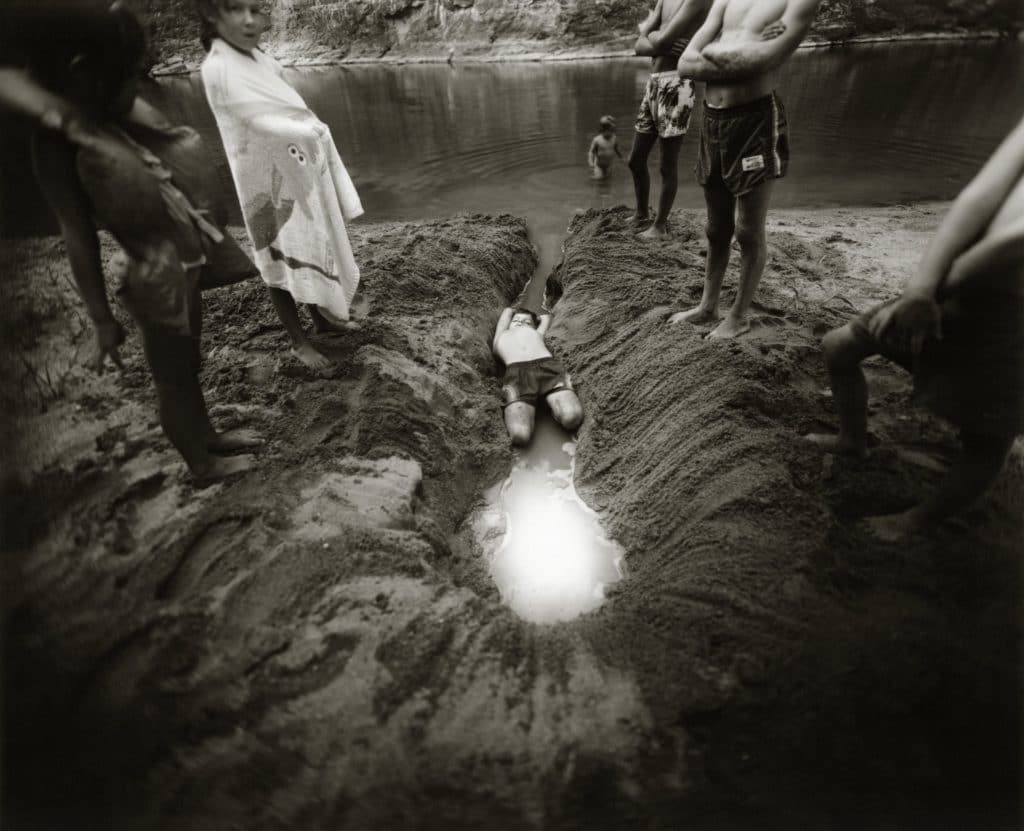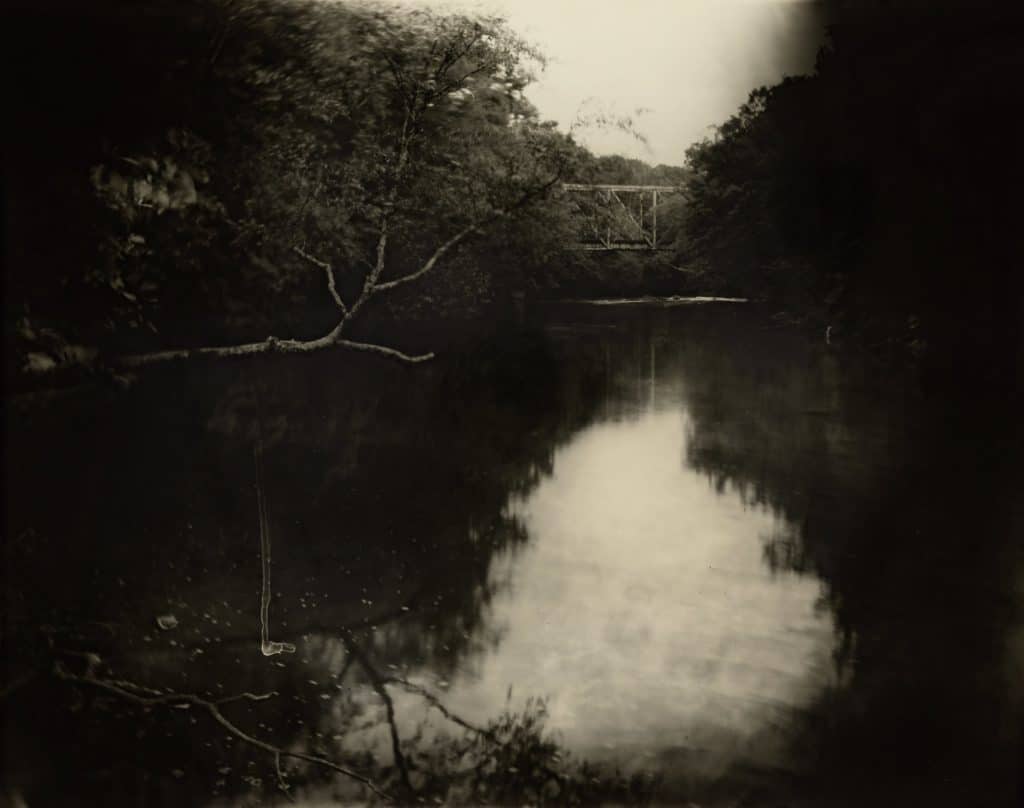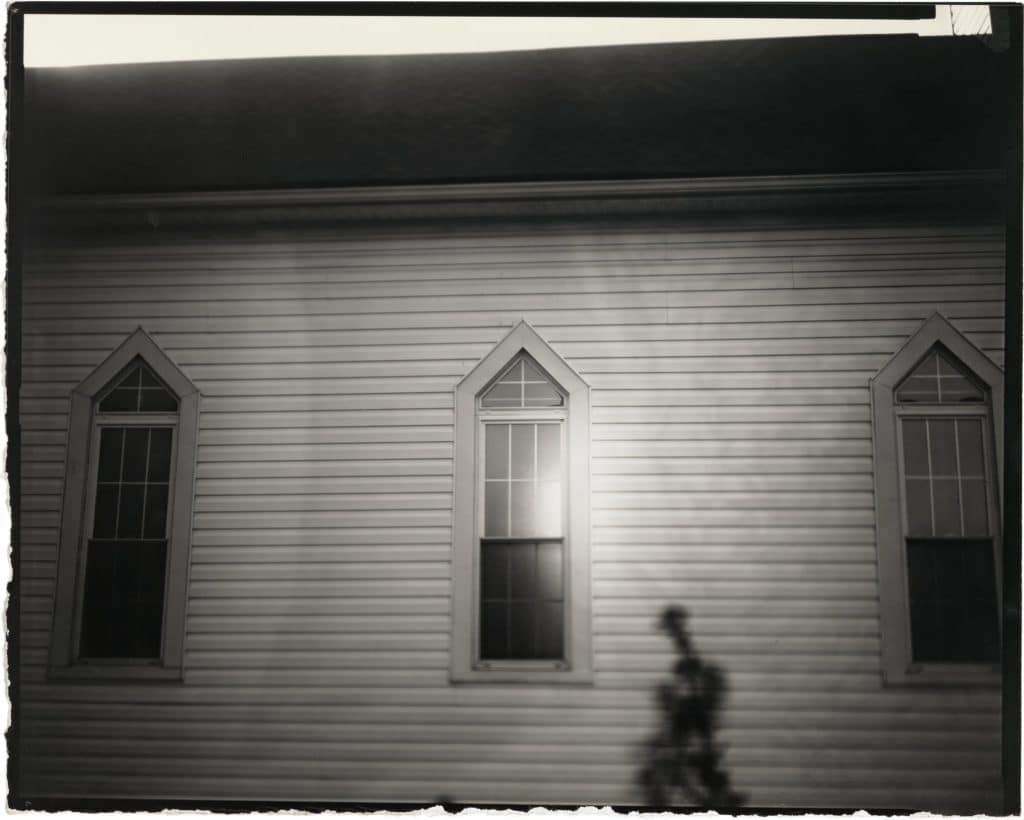Around Atlanta
High Museum of Art to Present “Sally Mann: A Thousand Crossings” This Fall
Published
5 years agoon

For more than 40 years, Sally Mann (American, b. 1951) has made experimental, elegiac and hauntingly beautiful photographs that explore the overarching themes of existence: memory, desire, death, the bonds of family and nature’s indifference to human endeavor. This fall, the High Museum of Art will present the first major survey of her work to travel internationally, “Sally Mann: A Thousand Crossings” (Oct. 19, 2019–Feb. 2, 2020).
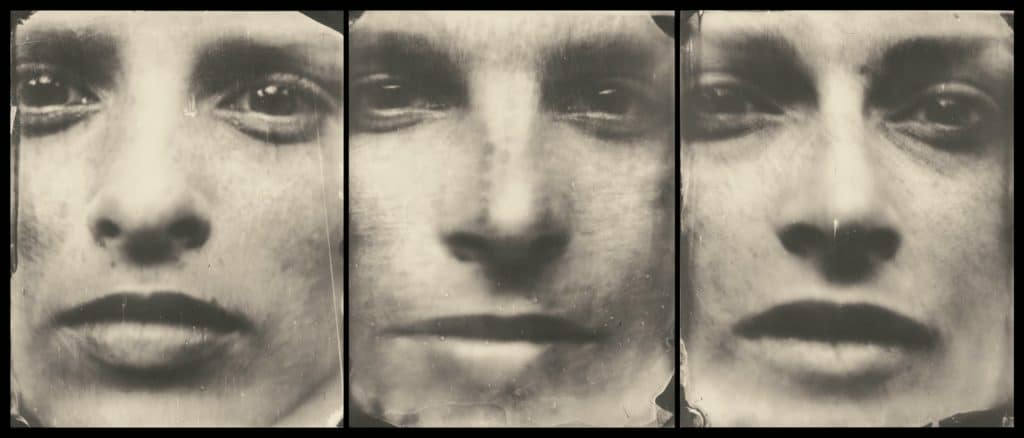
Organized by the National Gallery of Art in Washington, D.C., and the Peabody Essex Museum, Salem, Massachusetts, the exhibition presents figure studies, landscapes and architectural views that are united by their common origin and inspiration in the American South. Using her deep love of her homeland and her knowledge of its historically fraught heritage, Mann asks powerful, provocative questions—about history, identity, race and religion—that reverberate across geographic and national boundaries.
Sally Mann (American, born 1951),The Ditch, 1987, gelatin silver print, The Art Institute of Chicago, Gift of Sally Mann and Edwynn Houk Gallery
The exhibition is co-curated by the High’s recently appointed Donald and Marilyn Keough Family Curator of Photography Sarah Kennel (previously with the Peabody Essex Museum), who developed the project with Sarah Greenough, senior curator of photographs at the National Gallery.
“I’m thrilled to launch my tenure at the High with ‘A Thousand Crossings,’ an exhibition that is not only dear to my heart, but also makes perfect sense for the museum, which awarded Sally Mann the first ‘Picturing the South’ commission in 1996. Mann’s drive to ask the big questions—about love, death, war, race and the fraught process of growing up—coupled with her ability to coax powerful emotional resonances from the materials of her art make her one of today’s most compelling artists.”
“With this exhibition we continue to recognize of the importance of Mann’s work, which explores themes that will strongly resonate with our regional audience but that also addresses universal human concerns,” said Rand Suffolk, the High’s Nancy and Holcombe T. Greene, Jr., director. “We are delighted to have Sarah on board to lead the project, and we look forward to bringing these powerful photographs to Atlanta.”
“Sally Mann: A Thousand Crossings” investigates how Mann’s relationship with the South—a place rich in literary and artistic traditions but troubled by history—has shaped her work. The exhibition brings together 109 photographs, including new and previously unpublished work, and is accompanied by a fully illustrated catalog that offers an in-depth exploration of the evolution of Mann’s art.
Organized into five sections—Family, The Land, Last Measure, Abide with Me and What Remains, the exhibition opens with works from the 1980s, when Mann began to photograph her three children at the family’s remote summer cabin on the Maury River near Lexington, Virginia. Made with an 8-x-10-inch view camera, the family pictures refute the stereotypes of childhood, offering instead unsettling visions of its complexity. Rooted in the experience of the natural environment surrounding the cabin—the Arcadian woodlands, rocky cliffs and languid rivers—these works convey the inextricable link between the family and their land and the sanctuary and freedom that it provided them.
The exhibition continues in The Land with photographs of the swamplands, fields and ruined estates Mann encountered as she traveled across Virginia, Georgia, Louisiana and Mississippi in the 1990s. Hoping to capture what she called the “radical light of the American South,” Mann made pictures in Virginia that glow with a tremulous light, while those made in Louisiana and Mississippi are more blasted and bleak. In these photographs, Mann also began to experiment with her process, employing antique lenses, high-contrast Ortho film and the 19th-century wet plate collodion process. The resulting photographic effects, including light flares, vignetting, blurs, streaks and scratches, serve as metaphors for the South as a site of memory, violence, ruin and rebirth.
Mann used these same techniques for her photographs of Civil War battlefields in the exhibition’s third section, Last Measure. These brooding and elusive pictures evoke the land as history’s graveyard, silently absorbing the blood and bones of the many thousands who perished in battles such as Antietam, Appomattox, Chancellorsville, Cold Harbor, Fredericksburg, Manassas, Spotsylvania and the Wilderness.
In the early 2000s, Mann continued to reflect on how slavery and segregation had left their mark on the landscape of Virginia and, in turn, shaped her own childhood. The fourth section, Abide with Me, explores these entwined histories. Two groups of photographs imagine the physical and spiritual pathways for African Americans in antebellum and post–Civil War Virginia: the rivers and swamps that were potential escape routes for enslaved people and the churches that promised safe harbor, communion and spiritual deliverance. This section also includes photographs of Virginia Carter, the African American woman who served as Mann’s primary caregiver.
A defining and beloved presence in Mann’s life, Carter taught Mann about the profoundly complicated and charged nature of race relations in the South. The last component of this section is a group of pictures of African American men rendered in large prints (50 x 40 inches) made from collodion negatives. Representing the artist’s desire to reach across what she described as “the seemingly untraversable chasm of race in the American South,” these powerful photographs explore Mann’s own position in relation to the region’s fraught racial history.
The final section of the exhibition, What Remains, explores themes of time, transformation and death through photographs of Mann and her family. Her enduring fascination with decay and the body’s vulnerability to the ravages of time is evident in a series of spectral portraits of her children’s faces and intimate photographs detailing the changing body of her husband, Larry, who suffers from muscular dystrophy. The exhibition closes with several riveting self-portraits Mann made in the wake of an accident. Here, her links to Southern literature and her preoccupation with decay are in full evidence: the pitted, scratched, ravaged and cloudy surfaces of the prints function as analogues for the body’s corrosion and death. The impression of the series as a whole is of an artist confronting her own mortality with composure and conviction.
“Sally Mann: A Thousand Crossings” will be presented in the High’s Anne Cox Chambers Wing.
Sally Mann (American, born 1951), Deep South, Untitled (Bridge on Tallahatchie), 1998, gelatin silver print, Markel Corporate Art Collection Sally Mann (American, born 1951), Hephaestus, 2008, gelatin silver print, Virginia Museum of Fine Arts, Richmond, Kathleen Boone Samuels Memorial Fund Sally Mann (American, born 1951), St. Paul United Methodist 04:01, 2008-2016, gelatin silver print, Collection of the artist
About Sally Mann
Born in 1951 in Lexington, Virginia, Mann continues to live and work in Rockbridge County. She developed her first roll of film in 1969 and began to work as a professional photographer in 1972. She attended Bennington College, Vermont, and graduated in 1974 with a Bachelor of Arts in literature from Hollins College, Roanoke, Virginia, where she earned a Master of Arts in creative writing the following year. She has exhibited widely and published her photographs in the books “Second Sight: The Photographs of Sally Mann” (1983), “Sweet Silent Thought: Platinum Prints by Sally Mann” (1987), “At Twelve: Portraits of Young Women” (1988), “Immediate Family” (1992), “Still Time” (1994), “Mother Land: Recent Landscapes of Georgia and Virginia” (1997), “What Remains” (2003), “Deep South” (2005), “Sally Mann: Photographs and Poetry” (2005), “Proud Flesh” (2009), “Sally Mann: The Flesh and the Spirit” (2010) and “Remembered Light: Cy Twombly in Lexington”(2016). Mann’s bestselling memoir, “Hold Still: A Memoir with Photographs”(2015), was a finalist for the National Book Award. In 1996, Mann was selected to inaugurate the High’s “Picturing the South” photography series, a distinctive initiative that creates new bodies of work inspired by the American South for the Museum’s collection. She has received numerous other honors as well as grants from the National Endowment for the Arts, the National Endowment for the Humanities and the Guggenheim Foundation. In 2011 Mann delivered the prestigious William E. Massey Sr. Lectures in the History of American Civilization at Harvard University.
Exhibition Catalog
Published by the National Gallery of Art, Washington, and the Peabody Essex Museum, Salem, Massachusetts, in association with Abrams, this richly illustrated monograph constitutes an in-depth exploration of the evolution of Mann’s art through its five sections:Family, The Land, Last Measure, Abide with Me and What Remains. Plate sections are enriched by the inclusion of quotations from Mann herself and from her most beloved authors. Essays by curators Sarah Greenough and Sarah Kennel analyze Mann’s photographic development in concert with her literary interests and Mann’s family photographs, respectively. In their valuable contributions, Hilton Als, New Yorker staff writer and recipient of the 2017 Pulitzer Prize for Criticism; Malcolm Daniel, Gus and Lyndall Wortham Curator of Photography, The Museum of Fine Arts, Houston; and Drew Gilpin Faust, former president and Lincoln Professor of History, Harvard University, explore literary and photographic responses to racism in the South, Mann’s debt to 19th-century photographers and techniques, and the landscape as repository of cultural and personal memory. Featuring 230 color illustrations, the 332-page catalog will be available at the High Museum Shop.
Exhibition Organization and Support
“Sally Mann: A Thousand Crossings” is organized by the National Gallery of Art, Washington, and the Peabody Essex Museum, Salem, Massachusetts. This exhibition is made possible by Premier Exhibition Series Sponsor Delta Air Lines, Inc.; Exhibition Series Sponsors Georgia Natural Gas, Northside Hospital and WarnerMedia; Premier Exhibition Series Supporters the Antinori Foundation, Sarah and Jim Kennedy, Louise Sams and Jerome Grilhot, and wish foundation; Benefactor Exhibition Series Supporter Anne Cox Chambers Foundation; Ambassador Exhibition Series Supporters Tom and Susan Wardell and Rod Westmoreland; and Contributing Exhibition Series Supporters Lucinda W. Bunnen, Marcia and John Donnell, W. Daniel Ebersole and Sarah Eby-Ebersole, Peggy Foreman, Robin and Hilton Howell, Mr. and Mrs. Baxter Jones, Margot and Danny McCaul, Joel Knox and Joan Marmo, and The Ron and Lisa Brill Family Charitable Trust. Generous support is also provided by the Alfred and Adele Davis Exhibition Endowment Fund, Anne Cox Chambers Exhibition Fund, Barbara Stewart Exhibition Fund, Dorothy Smith Hopkins Exhibition Endowment Fund, Eleanor McDonald Storza Exhibition Endowment Fund, The Fay and Barrett Howell Exhibition Fund, Forward Arts Foundation Exhibition Endowment Fund, Helen S. Lanier Endowment Fund, Isobel Anne Fraser–Nancy Fraser Parker Exhibition Endowment Fund, John H. and Wilhelmina D. Harland Exhibition Endowment Fund, Katherine Murphy Riley Special Exhibition Endowment Fund, Margaretta Taylor Exhibition Fund, and the RJR Nabisco Exhibition Endowment Fund.
About the High Museum of Art
Located in the heart of Atlanta, Georgia, the High Museum of Art connects with audiences from across the Southeast and around the world through its distinguished collection, dynamic schedule of special exhibitions and engaging community-focused programs. Housed within facilities designed by Pritzker Prize–winning architects Richard Meier and Renzo Piano, the High features a collection of more than 17,000 works of art, including an extensive anthology of 19th- and 20th-century American fine and decorative arts; major holdings of photography and folk and self-taught work, especially that of artists from the American South; burgeoning collections of modern and contemporary art, including paintings, sculpture, new media and design; a growing collection of African art, with work dating from pre-history through the present; and significant holdings of European paintings and works on paper. The High is dedicated to reflecting the diversity of its communities and offering a variety of exhibitions and educational programs that engage visitors with the world of art, the lives of artists and the creative process. For more information about the High, visit www.high.org.
Related
Around Atlanta
Greek Film Expo Brings Acclaimed Features and Short Films to Atlanta
Published
2 weeks agoon
October 7, 2024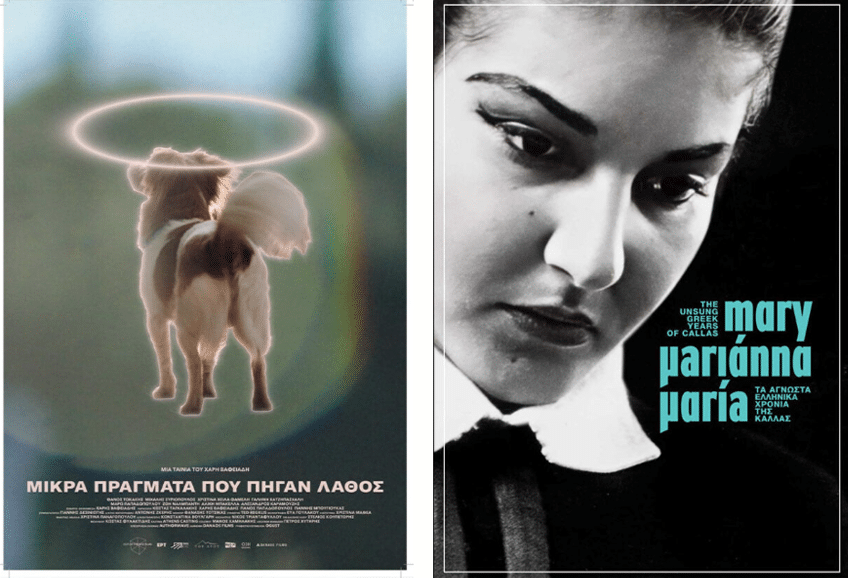
The 9th annual Atlanta Greek Film Expo will showcase five critically acclaimed Greek feature films (all with English subtitles) and four short films on October 25–27 at the iconic Tara Theatre on Cheshire Bridge Road.
With the goal of elevating and promoting Hellenic (Greek) culture and arts in Atlanta, the annual expo showcases some of the most dynamic, innovative and highly acclaimed films from Greece and Cypress.
One of the films showing at this year’s event, Murderess, is Greece’s submission for Best International Feature Film at the 97th Annual Academy Awards (which will air in 2025).
Free parking will be available at the venue each day of the expo. And the three-day event concludes with an open-to-the-public, celebratory closing reception at the Hellenic Center, located at 2500 Clairmont Road, NE.
Atlanta Greek Film Expo Schedule
Friday, October 25, 7 pm — Little Things That Went Wrong
This comedic drama is a clever and touching exploration of fatherhood, failure and redemption.
Saturday, October 26, 4 pm — Mary, Marianna, Maria
A documentary which chronicles the early years of Maria Callas in Greece, offering a rare and insightful look into her formative years.
Saturday, October 26, 7 pm — Murderess
This year’s Oscar entry for Greece offers a dark portrayal of moral and existential dilemmas, staying true to the literary masterpiece by Alexandros Papadiamantis.
Sunday, October 27, 2 pm — Guest Star
A satirical and engaging film that explores themes of fame, personal identity and the often absurd nature of public personas.
Sunday, October 27, 5 pm — The Last Taxi Driver
A gripping drama that delves into obsession, unfulfilled dreams and the hidden turmoil beneath a seemingly ordinary life.
Sunday, October 27, 7:30 pm — IT’S A WRAP Closing Reception
Eat, drink and celebrate in Greek style at the beautiful Hellenic Center!
Tickets and information
Ticket prices range from $10-$25 for the films and $45 for the closing reception. Special VIP and Film Lover packages are also available.
For more information or to purchase tickets, visit atlantagreekfilm.org.
If you have questions about the event, email atlantagreekfilm@gmail.com.
Related
Around Atlanta
Local Artist Represented by Fay Gold Gallery at Upcoming Atlanta Art Fair
Published
3 weeks agoon
October 2, 2024
Local artist and Peachtree Corners resident, Amy Rader, will be part of the first-ever Atlanta Art Fair, being held at Pullman Yards October 3–6. The fair will feature local galleries, artists and curators alongside a variety of national programs and a dynamic series of public art projects and events presented at locations around town.
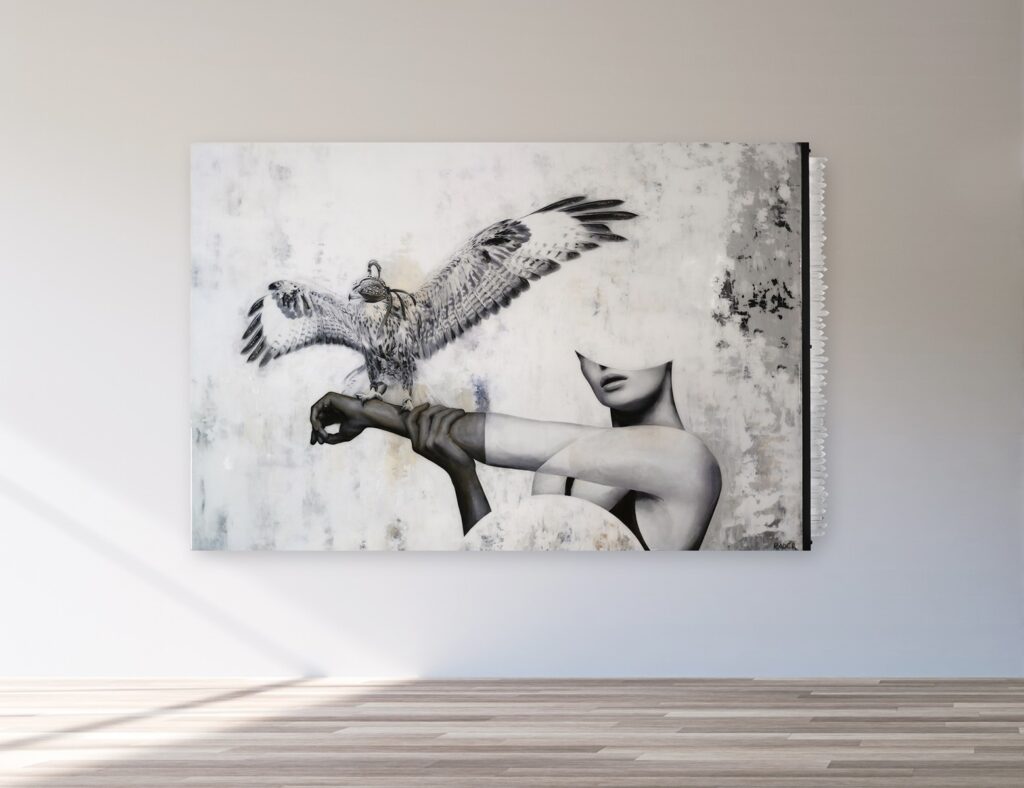
Aimed at amplifying local voices and acting as a platform for the city’s incredible creativity, the Atlanta Art Fair — the first major art fair of its kind in the city — will showcase a wide range of artistic styles and genres, including contemporary work, paintings, photography, live performances and innovative projects.
Represented by the esteemed Fay Gold Gallery, Rader will have several pieces on show at the Fay Gold Booth E07, something the artist is thrilled about, as her connection to Gold spans three decades.
“In 1993, while still in high school, I attended a summer arts program at Lagrange College,” Rader recalled. “We took a field trip to visit the top gallery in Atlanta — the Fay Gold Gallery. I stood in awe of the marvelous pieces on display … [Later] after years working with ad agencies for Fortune 500 clients, I was ready to leave my career in graphic design to pursue art full time. Showing my work at a gallery in Buckhead introduced me to Fay Gold 29 years after that visit in 1993. It was a full circle moment.”
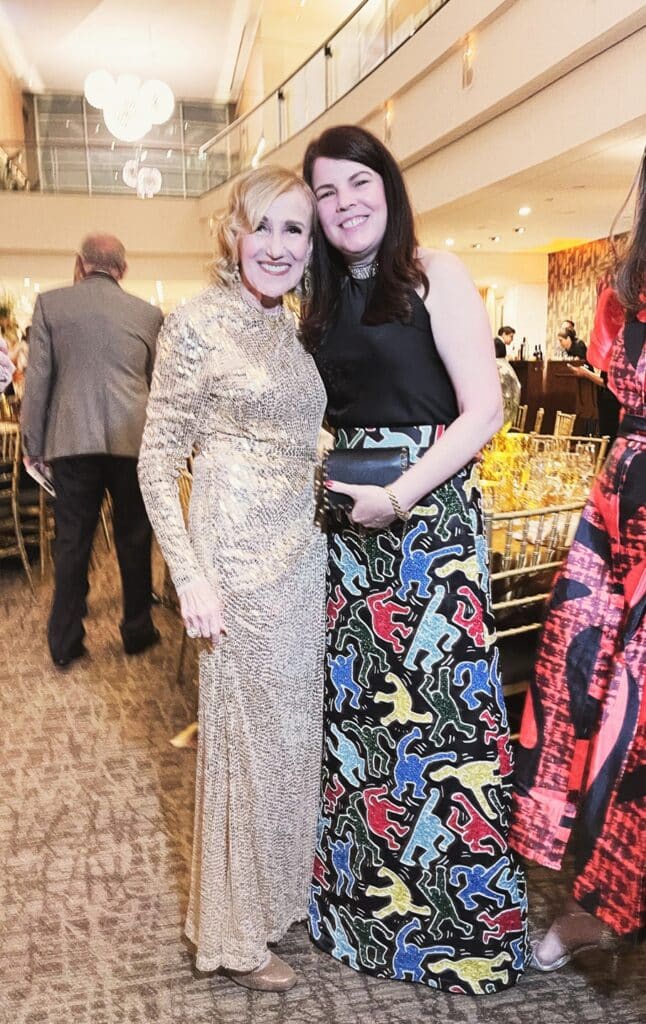
A local legend
An Atlanta art legend, Fay Gold is best known for her groundbreaking exhibitions of artists such as Jean-Michel Basquiat, Cindy Sherman, Keith Haring, Andres Serrano and Robert Mapplethorpe.
She curated the formative years of Elton John’s personal art collection and raised $750,000 for the Elton John Aids Foundation by creating and chairing two art auctions for the organization. Over the years, she’s also worked with corporate clients and has received dozens of awards for her many contributions to the Atlanta art scene.
Fay Gold represented Rader’s work in a successful art show in 2022 followed by an art auction in 2023 and now at the Atlanta Art Fair in 2024.
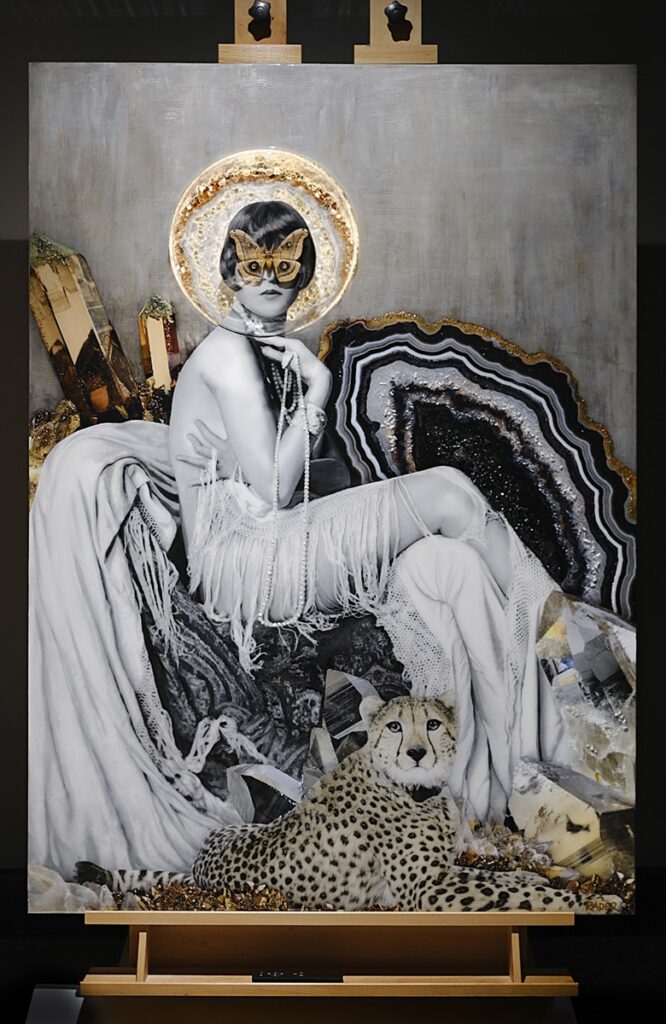
A lifelong love of art
In love with art from an early age, Rader was encouraged by a high school teacher to apply to art school, which she did, receiving a scholarship from the Art Institute of Atlanta and graduating from the (now-closed) art school with the Best Portfolio Award. For the past 25+ years Rader has worked within the design and art fields, building an impressive body of work, with a particular focus on creating traditional art and large-scale pieces for hospitality spaces.
Her work can be seen in galleries, private collections, luxury buildings, restaurants and more, including the Buckhead Art & Company Gallery, The Hue Midtown and Chops restaurant in Buckhead.
According to her website, Rader’s notable accomplishments include “being selected to represented Tesla and Microsoft at Art Basel, commissioned work for a new Lake Nona project with Tavistock, creating custom pieces for two $140 million luxury Related Group buildings and commissioned work for Norwegian Cruise Line’s new Prima ships.”
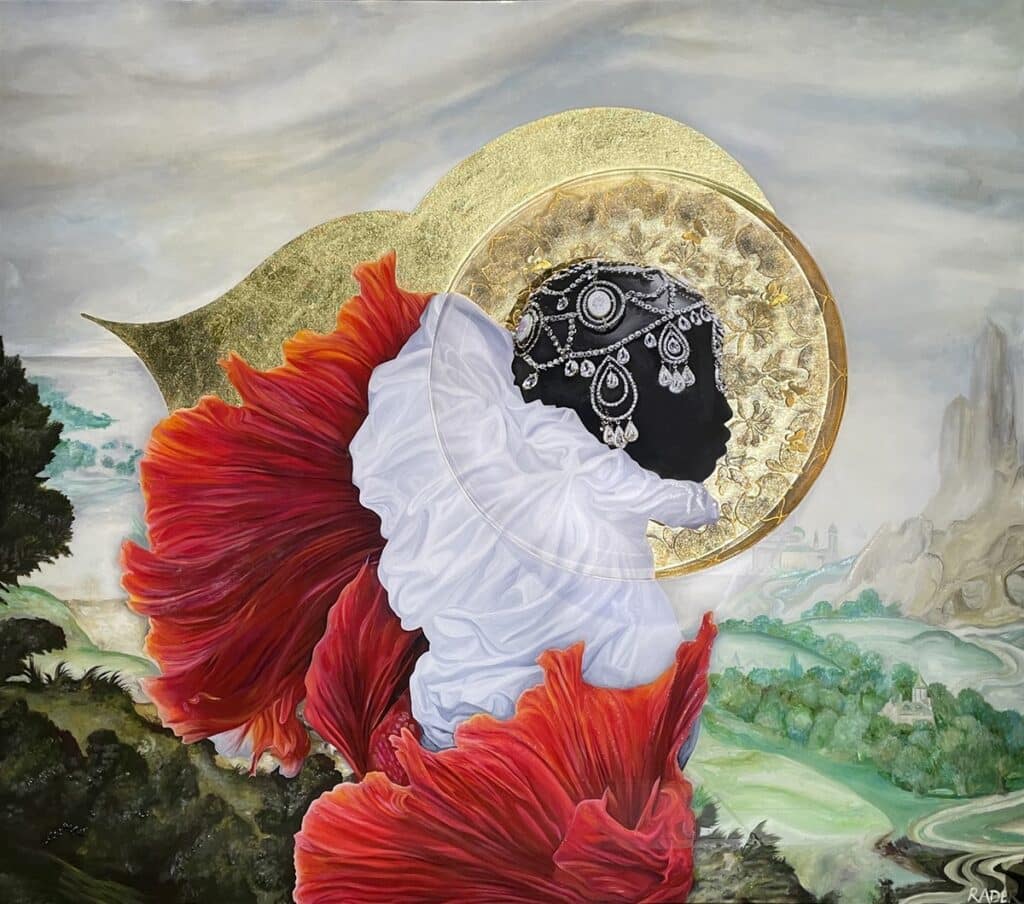
Rader is especially excited about the Atlanta Art Fair — not just being part of it, but the fact that it’s happening at all.
“This is such a big deal for the arts community,” said Rader. “The Art Fair is a wonderful addition to Atlanta’s cultural offerings. I’m describing it as our very own ‘Art Basel’ level fair, with both national and international galleries. We are used to art festivals, but this is a different caliber of event by the producers behind the San Francisco Art Fair, Seattle Art Fair and Art on Paper New York.”
The details
The Atlanta Art Fair takes place at Pullman Yards and other venues throughout the city, October 3–6. Schedules, artist lists, tickets and additional information can be found online at theatlantaartfair.com.
For more about Amy Rader, visit raderdesigns.net.
To learn more about Fay Gold and the Fay Gold Gallery, visit faygoldgallery.com.
Related
Around Atlanta
Brennan Lee Mulligan, DrLupo, Biqtch Puddin’ and More Headline Action-Packed DreamHack Atlanta Lineup
Published
1 month agoon
September 23, 2024
Three-day gaming lifestyle festival brings best of gaming, tabletop roleplaying, indies, music, esports and cosplay to the Big Peach
DreamHack (ESL FACEIT Group’s international gaming lifestyle festival) has announced exciting new guests and programming taking place at this year’s DreamHack Atlanta, October 4–6 at the Georgia World Congress Center.
Brennan Lee Mulligan returns to DreamHack alongside the festival’s largest-ever Dungeons & Dragons area. World-class creators, including DrLupo, and the Atlanta debut of the Drag & Drop cosplay drag show hosted by local performer Biqtch Puddin’ are also on the schedule.

“DreamHack features the best of gaming culture from all over the world right here in Atlanta,” said Guy Blomberg, director of festivals, North America, DreamHack. “We’re bringing the best global talent and highlighting local developers, streamers, performers and storytellers to create a celebration of everything to do with gaming.”
Over 20 of the biggest names from Dimension 20, Critical Roll, Lynvannder and more expand DreamHack’s roleplaying offerings
Following his DreamHack debut this summer, Dropout’s resident Dungeon Master Brennan Lee Mulligan returns to DreamHack with an all-star cast of adventurers. Joined by Zac Oyama, Erika Ishii, Anjali BhimaniandAliza Pearl, the party will explore an all-new one-shot adventure designed specifically for DreamHack Atlanta.
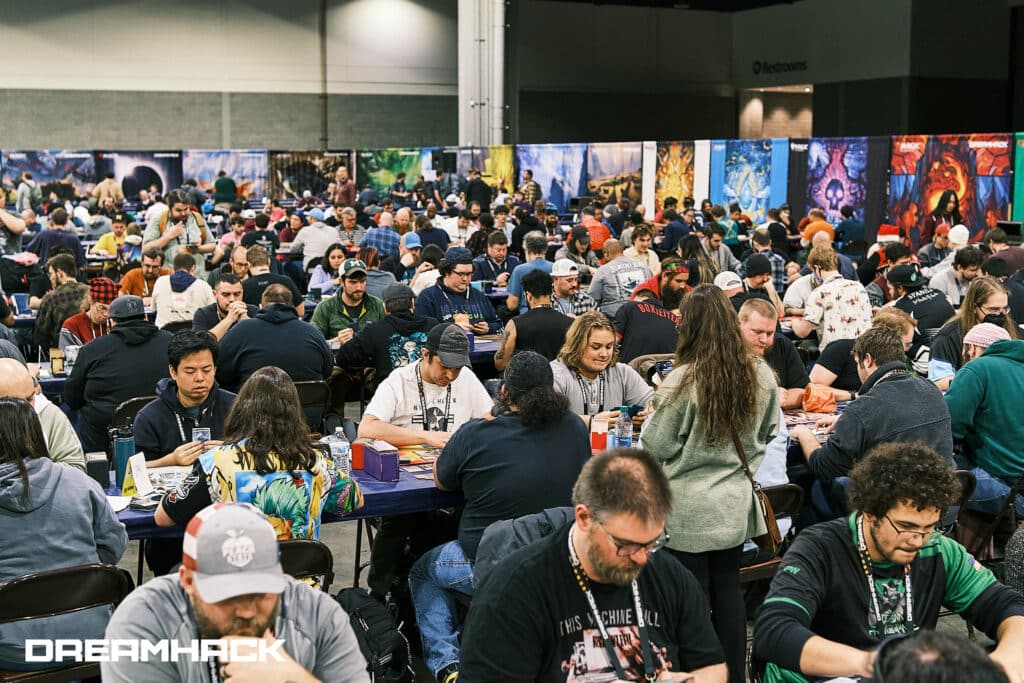
Fans can also step into the Tabletop Tavern, a dedicated stage for live roleplaying game content presented in partnership with Lynnvander. Veteran storytellers, writers and actors will join forces for a slew of custom adventures. Special guests include worldbuilder and dungeon master Jasmine Bhullar, writer and actress Rekha Shankar, game designer and writer Keith Baker, voice actress Mela Lee and many more.
The LEGO Group makes DreamHack Atlanta debut with all-new Builders Zone
DreamHack guests can expand on the games they know and love through the unlimited creative opportunities of LEGO®️ bricks at DreamHack Atlanta’s all-new Builders Zone, sponsored by the LEGO Group. Attendees can participate in gaming-themed make-and-take builds, contribute to the LEGO brick-built mystery mural on-site or even participate in DreamHack Quests for a chance to take home new LEGO sets. DreamHack will also invite creators to the Main Stage for a competition to celebrate gamers’ creative LEGO builds at the festival — with special guests to be announced.

DreamHack Atlanta hosts largest-ever Indie Playground and Artist Alley
DreamHack’s Indie Playground and Artist Alley will have their largest footprints yet, with 60 game developers as well as 60 more independent artists — almost half of which are Atlanta locals. In addition to exploring booths, guests can participate in the Artist Alley Stamp Rally, trade unique pins at the pin swap board, trick-or-treat with vendors and get hands-on with up-and-coming video games. Both the Artist Alley and Indie Playground are open to all guests daily from 12 to 6 p.m.

Drag & Drop cosplay drag show returns with Atlanta debut
Drag & Drop, the festival’s flagship cosplay drag show, will return after its debut at DreamHack Dallas. Hosted by Emmy-nominated artist Biqtch Puddin’, the show will feature a host of new nerdy performances and performers who slay video game bosses, and looks. Participating artists include Brigitte Bidet, LaZanya Ontré, Dotte Com and more.

Drag & Drop complements a full weekend of cosplay programming for attendees. The festival’s cosplay competition on Saturday, will be judged by an all-star cast of professional cosplayers, including Atlanta-native Pumpkin.Pixie.Princess and host Jahara Jayde.
DreamHack Atlanta sets record with over 500 creator guests, including Jake Lucky, bbjess and more
This year’s DreamHack Atlanta will host the largest creator cohort ever for a DreamHack Atlanta festival, with over 500 local and national influencers onsite. After receiving a record-setting number of applications, DreamHack Atlanta’s host of content creators will participate in Main Stage competitions, host meet & greets with fans and stream live from DreamHack’s Creator Hub. Top guests include Main Stage emcee bbjess, creator interview experts Jake Lucky and HUN2R, veteran streamers DrLupo (hosted in partnership with Anthros) and Amouranth and more.

Georgia FIRST Robotics brings local high schoolers to DreamHack for STEM showcase
Georgia high school students from across the state will take part in Georgia FIRST Robotics’ interactive showcase live at DreamHack Atlanta. The program requires students and their peers to collaborate on creating their own industrial-size robots to go head-to-head in challenging field games. Students are behind it all — from raising funds to designing their teams’ brand to building and piloting their robots — and the festival’s showcase will highlight the work that goes into making these high-tech machinations.
All of this is just one slice of what DreamHack Atlanta 2024 has to offer.
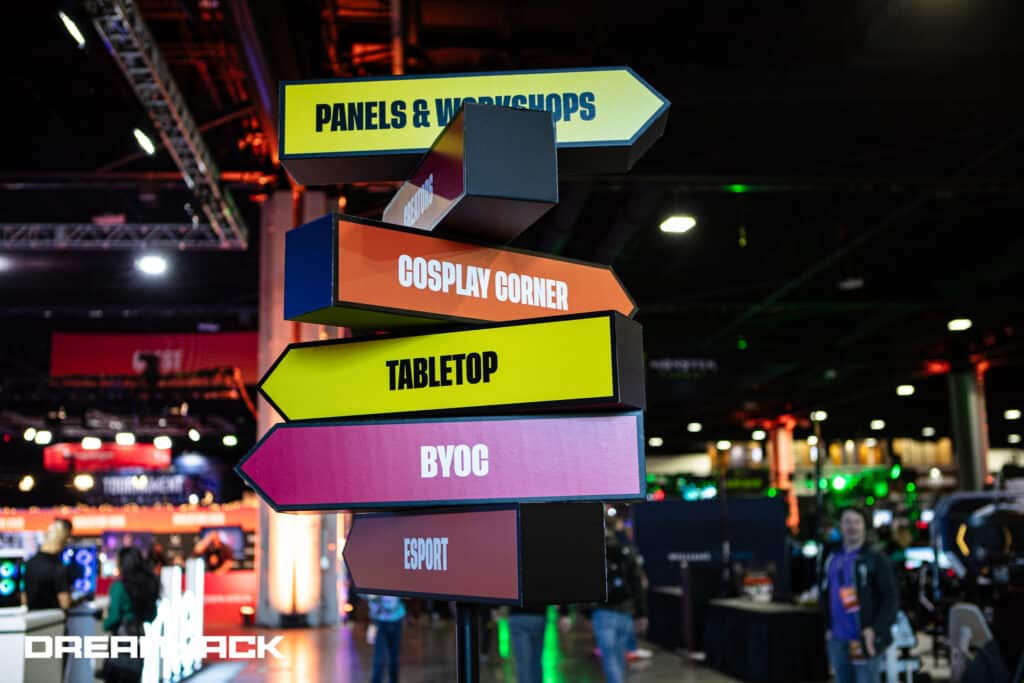
The details
DreamHack Atlanta takes place at the Georgia World Congress Center on October 4–6
For more information on competitions at DreamHack Atlanta — including world-class esports tournaments, grassroots competition in the Freeplay area, cosplay contests and more —click here.
Tickets are still available and start at $45 for a single day or $109 for three-day access.
For more information or to purchase tickets, visit dreamhack.com/atlanta/tickets/.
Related
Read the Digital Edition
Subscribe
Keep Up With Peachtree Corners News
Join our mailing list to receive the latest news and updates from our team.
You have Successfully Subscribed!

TransPak Acquires Reid Packaging to Expand East Coast Presence

Peachtree Corners City Leaders Engage Residents on Land Use Development

The NOW Massage Opens Peachtree Corners Boutique at The Forum

GCPL Accepting Applications for Next New Start Entrepreneurship Incubator

Ruwa Romman’s Re-Election Bid: Addressing Housing, Taxes and Transportation in Gwinnett [Podcast]

Councilmember Sadd to Host Town Hall Meeting on October 29

PTC Arts Inc. Furthers Mission to Provide Accessible Art

From Corporate to Sci-Fi Author: Jill Tew Discusses ‘The Dividing Sky’ [Podcast]

From Corporate to Sci-Fi Author: Jill Tew Discusses ‘The Dividing Sky’ [Podcast]

PTC Arts Inc. Furthers Mission to Provide Accessible Art

Councilmember Sadd to Host Town Hall Meeting on October 29

Ruwa Romman’s Re-Election Bid: Addressing Housing, Taxes and Transportation in Gwinnett [Podcast]

GCPL Accepting Applications for Next New Start Entrepreneurship Incubator

TransPak Acquires Reid Packaging to Expand East Coast Presence

The NOW Massage Opens Peachtree Corners Boutique at The Forum

Peachtree Corners City Leaders Engage Residents on Land Use Development

Light up the Corners [Video]

Capitalist Sage: Business Leadership in Your Community [Podcast]

Cliff Bramble: A Culinary Adventure through Italy

Top 10 Brunch Places in Gwinnett County

A Hunger for Hospitality

THE CORNERS EPISODE 3 – BLAXICAN PART 1

Top 10 Indoor Things To Do This Winter

The ED Hour: What it takes to Remove Barriers from Education

Peachtree Corners Life
Topics and Categories
Trending
-
Business1 week ago
TransPak Acquires Reid Packaging to Expand East Coast Presence
-
Health & Wellness1 week ago
The NOW Massage Opens Peachtree Corners Boutique at The Forum
-
Community5 days ago
GCPL Accepting Applications for Next New Start Entrepreneurship Incubator
-
Peachtree Corners Life4 days ago
Ruwa Romman’s Re-Election Bid: Addressing Housing, Taxes and Transportation in Gwinnett [Podcast]



